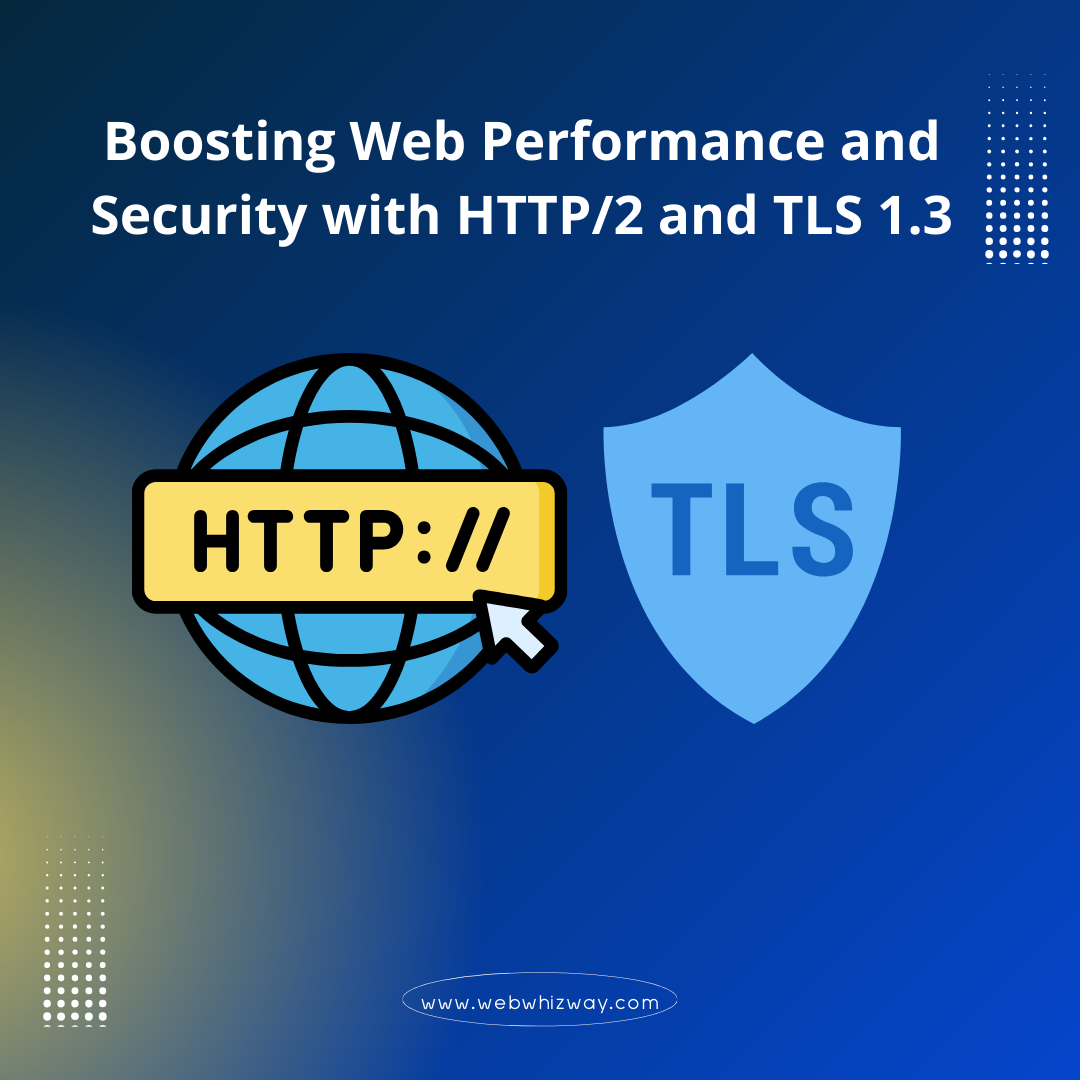In today’s digital age, optimizing web performance and ensuring robust security are crucial for delivering an exceptional user experience. Two technologies that significantly contribute to these goals are HTTP/2 and TLS 1.3. This article explores these protocols, detailing how they enhance web performance and security by discussing their concepts and benefits.
HTTP/2: Revolutionizing Web Communication
HTTP/2, the second major version of the HTTP protocol, improves the efficiency and speed of web communication. Unlike HTTP/1.1, which relies on text-based commands and multiple connections, HTTP/2 introduces several advanced features:
1. Multiplexing: HTTP/2 allows multiple requests and responses to travel concurrently over a single TCP connection. This approach eliminates the need for multiple connections and reduces latency, improving loading times by avoiding head-of-line blocking.
2. Header Compression with HPACK: HTTP/2 employs HPACK compression to reduce HTTP header size. By minimizing redundant header data, it speeds up data transfer and enhances overall performance.
3. Binary Framing Layer: Unlike HTTP/1.1’s text-based format, HTTP/2 uses a binary framing layer. This change simplifies data parsing and improves the efficiency of data transmission.
4. Stream Prioritization: HTTP/2 enables stream prioritization, allowing critical resources to load first. This feature optimizes the loading sequence and enhances the perceived performance of a website.
5. Server Push: HTTP/2 can proactively push resources to the client before they are explicitly requested. This anticipatory delivery reduces waiting times for essential resources, improving user experience.
Benefits of HTTP/2
These are the benefits of using HTTP/2 on your website:
1. Reduced Latency: Multiplexing and header compression significantly decrease loading times, enhancing user experience.
2. Improved Efficiency: The binary framing layer and stream prioritization streamline data processing and delivery, making web communication more efficient.
3. Enhanced Performance: Server push minimizes delays in resource delivery, leading to faster load times and a more responsive website.
TLS 1.3: Advancing Web Security
TLS 1.3, the latest version of the Transport Layer Security protocol, improves the security and efficiency of encrypted communications. It builds on TLS 1.2 with several key advancements:
1. Streamlined Handshake Process: TLS 1.3 simplifies the handshake process required to establish a secure connection, reducing the time needed to initiate a secure session.
2. Enhanced Forward Secrecy: Forward secrecy ensures that session keys remain secure even if long-term keys are exposed. TLS 1.3 enforces this feature to protect past communications from future breaches.
3. Modern Encryption Algorithms: TLS 1.3 supports advanced encryption algorithms like AES-GCM and ChaCha20-Poly1305. These algorithms offer better performance and stronger security compared to older methods.
4. Zero Round Trip Time (0-RTT) Data: TLS 1.3 allows clients to send data before establishing a secure connection. This feature reduces latency for repeat visitors.
5. Protocol Simplification: By removing outdated features and reducing complexity, TLS 1.3 is easier to implement and less prone to vulnerabilities.
Benefits of TLS 1.3
The following are the benefits of using TLS 1.3 on your website:
1. Faster Connections: The streamlined handshake process accelerates the establishment of secure connections, resulting in quicker load times.
2. Enhanced Security: Modern encryption algorithms and forward secrecy provide robust protection for data in transit.
3. Reduced Latency: 0-RTT data reduces delays for returning visitors, enhancing their browsing experience.
The Synergy of HTTP/2 and TLS 1.3
When used together, HTTP/2 and TLS 1.3 offer combined benefits that enhance both web performance and security:
1. Optimized Performance: HTTP/2’s multiplexing and header compression work with TLS 1.3’s faster handshake and reduced latency, leading to a more responsive and efficient web experience.
2. Enhanced Security: TLS 1.3’s strong encryption and forward secrecy complement HTTP/2’s efficient data handling, ensuring that performance improvements do not compromise security.
3. Future-Proofing: Implementing both technologies prepares your website to leverage the latest advancements, maintaining competitiveness and compatibility with future developments.
Implementation Tips for Using HTTP/2 and TLS 1.3 on Your Website
To maximize the benefits of HTTP/2 and TLS 1.3, follow these steps:
1. Verify Server Support: Check that your web server and hosting provider support HTTP/2 and TLS 1.3.
2. Update Configuration: Configure your server to enable both protocols, adjusting settings and updating SSL/TLS certificates as needed.
3. Test and Monitor: Conduct thorough testing to evaluate performance and security improvements, using tools to track metrics and address any issues.
4. Stay Informed: Keep up with updates and best practices to maintain an optimized and secure web environment.
Conclusion
HTTP/2 and TLS 1.3 are powerful technologies that greatly enhance web performance and security. Understanding and implementing these protocols allow you to deliver faster, more secure web experiences, ensuring your website meets the demands of today’s users and remains resilient against emerging threats.
